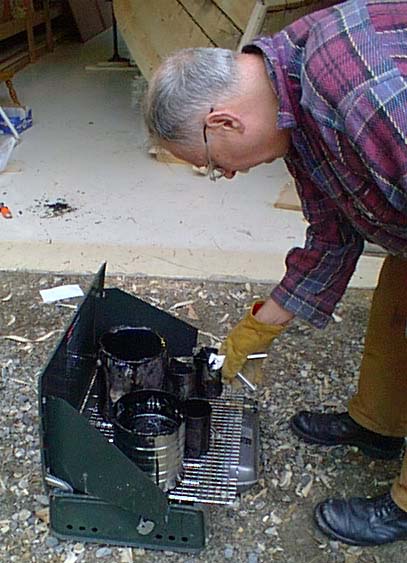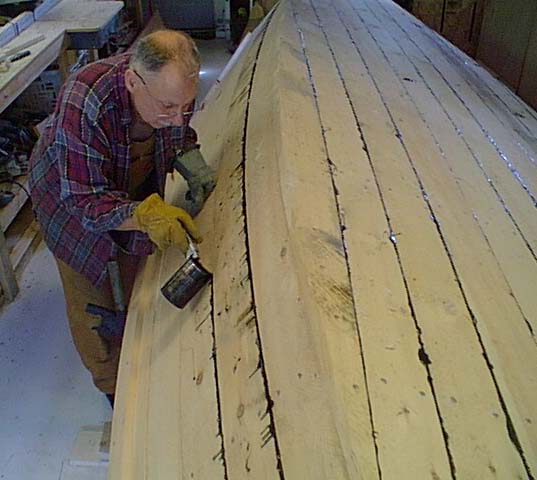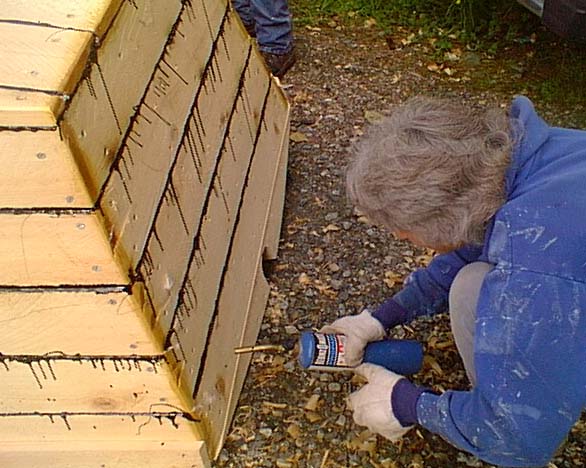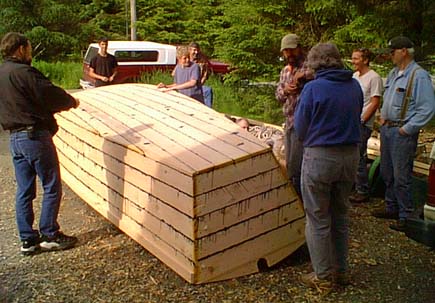
Building the Klondike Boat |
|
June 26-27: Paying the Seams |
|
After the cotton caulking is in, the seams are payed with pitch,
as the stampeders did. Pitch was apparently hauled over
the pass, and at times fetched incredibly high prices.
Exactly what the composition of the pitch used in 1897 was is
not known, but at least some workboat deck seams at the time
used pitch with some petroleum product in part
("tar", as opposed to pure tree pitch).
The pitch is heated and poured into the seam over the caulking, further waterproofing and protecting the cotton. In finely-finished boats the excess pitch is scraped off so the seam lays smooth. However, the miners were likely in too much of a hurry to do this, as all the pictures show unscraped pitched seams, with runs of pitch all over, and glops of pitch in other places that are likely sealing knotholes. We're using commercially available pitch, as used by contemporary wooden workboats and historic restorations. The historic restorations seem to favor Jeffries #2 Marine Glue by Davies, imported from England which can soften a bit with temperature and remains a little flexible. Zophar Mills Black Marine Glue is a little harder, sometimes preferred by fishermen, but smells a little more of asphalt. Zophar Mills was a well-known New York firefighter who opened a ship chandlery business in 1846 which lives on to this day.
|
| Heating the pitch on the old coleman white gas stove. Fire extinguishers nearby. |

|
| Paying the seams with hot pitch. The drips and dribbles are 100% authentic and in all the old Klondike pictures. The stampeders were in too much of a hurry to clean up the seams. |

|

Adjusting the pitch with a torch to melt it in further in places. |

(click to enlarge) Outside, and ready for the trailer. |

Crew stuffs the trailer-mounted boat back in shop for final fitting. Tomorrow it goes to the ferry! |
Back to the Main Klondike Boatbuilding Page
Contact: Fritz Funk (fritzf@alaska.net)